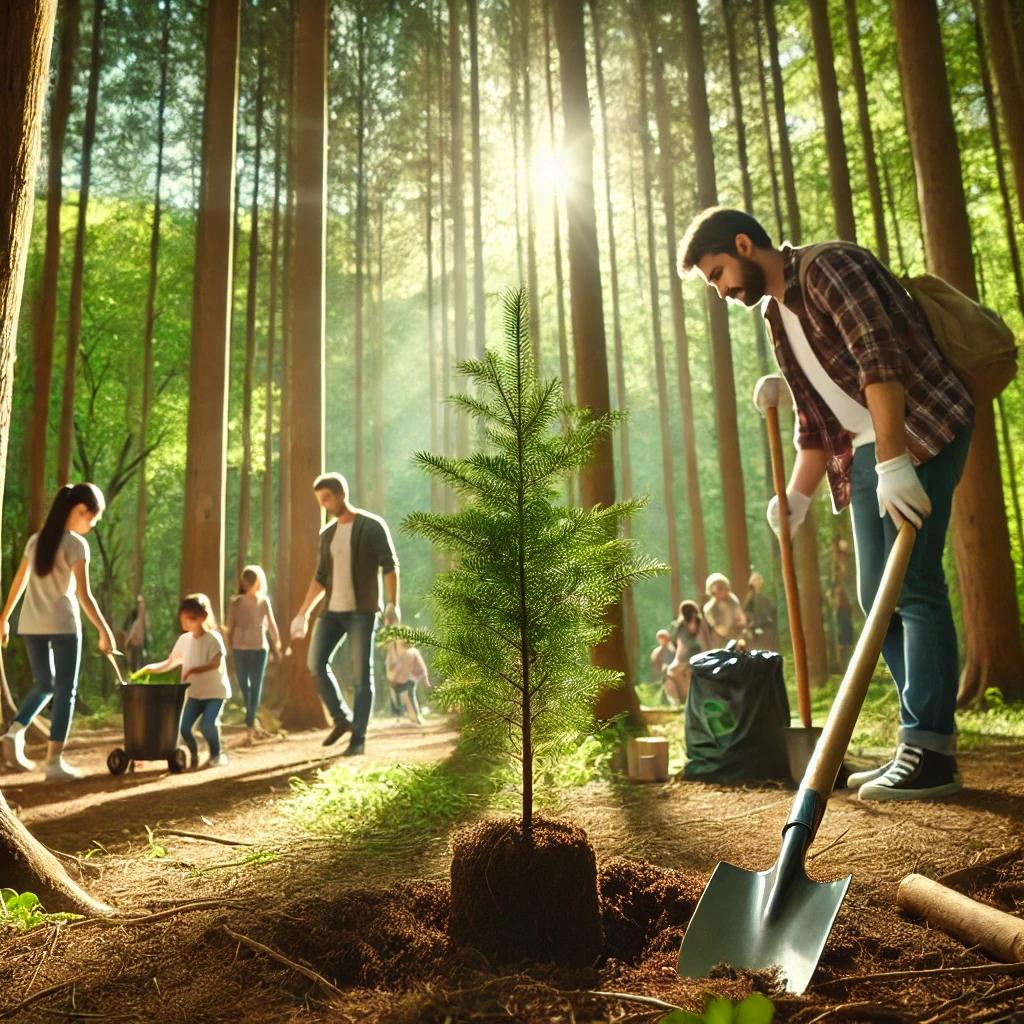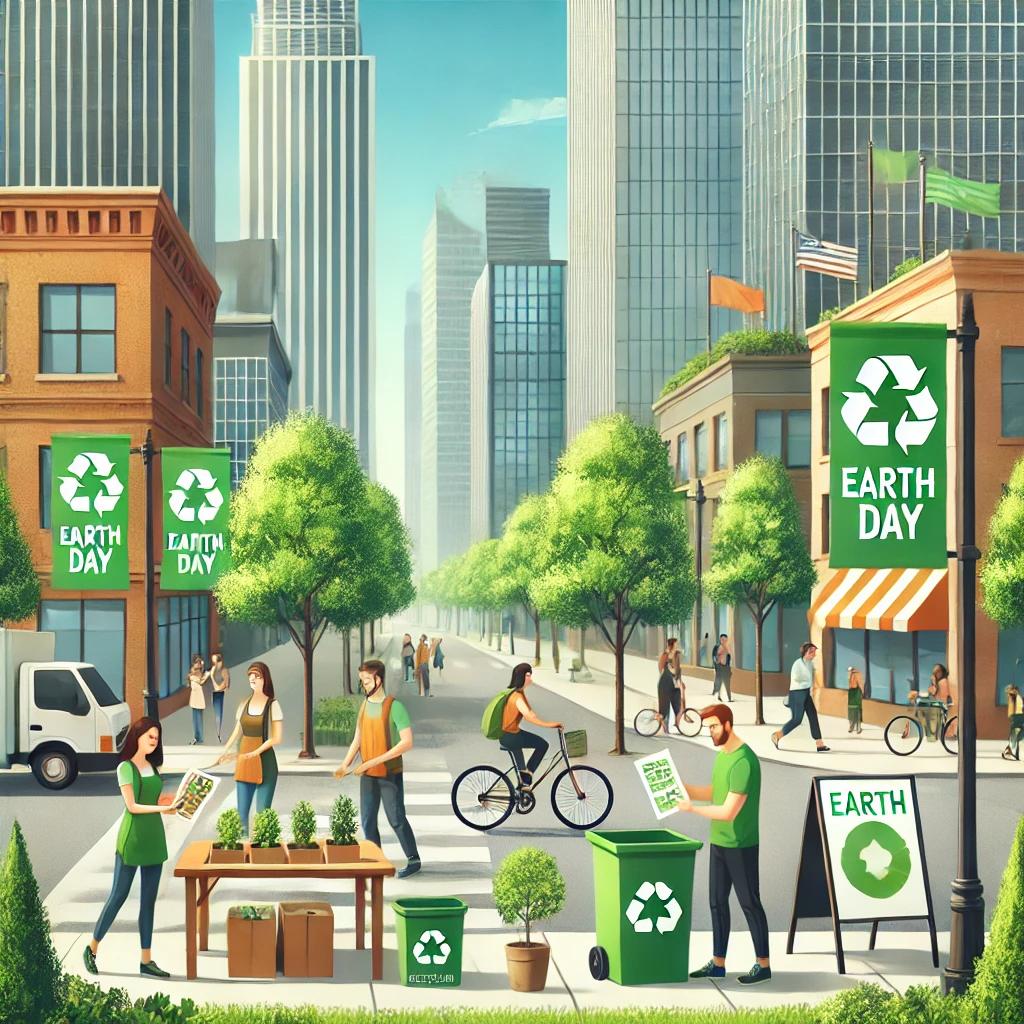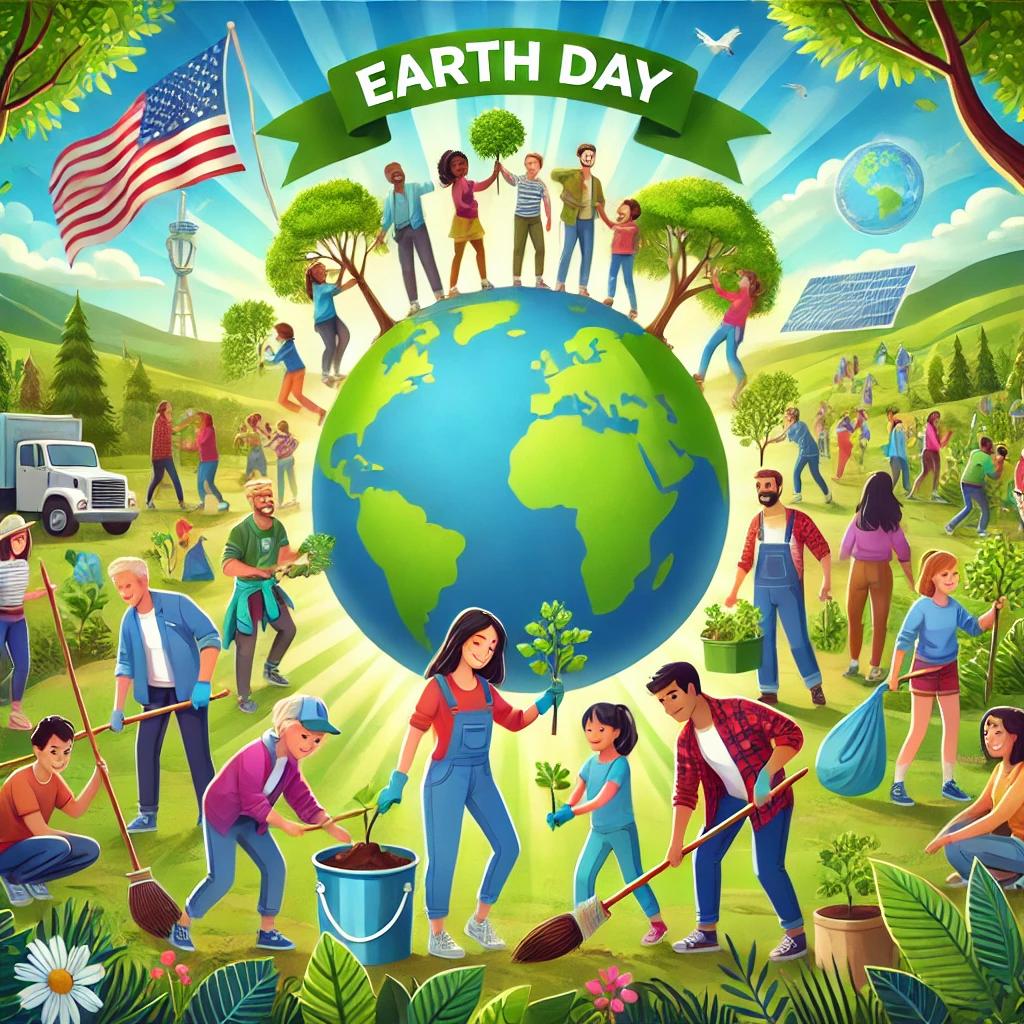Earth Day is a global event celebrated every year on April 22nd to raise awareness about environmental protection and the urgent need to address climate change. Since its inception in 1970, Earth Day has become a symbol of global environmental action, uniting millions of people to participate in activities aimed at promoting sustainability, reducing pollution, and protecting biodiversity. In this Earth Day Quiz, we invite you to test your knowledge about the history, significance, and impact of Earth Day, as well as general facts about our planet’s environment and conservation efforts. Whether you’re an eco-warrior or new to environmental causes, this quiz is a fun way to see how much you know about preserving our world for future generations.
If you like the quiz then come try this – Earth Day Quiz: Celebrating the Planet
Earth Day Quiz Questions
When was the first Earth Day celebrated?
a) 1965
b) 1970
c) 1980
d) 1995Which country was the first to celebrate Earth Day?
a) Canada
b) United States
c) Brazil
d) ChinaWhat is the main theme for Earth Day?
a) Climate Change
b) Water Conservation
c) Save the Forests
d) Renewable EnergyWhat percentage of the Earth’s surface is covered by oceans?
a) 50%
b) 60%
c) 70%
d) 80%Which of the following gases is the largest contributor to global warming?
a) Nitrogen
b) Oxygen
c) Carbon Dioxide
d) HydrogenWhich of these activities is often encouraged on Earth Day?
a) Carpooling
b) Traveling
c) Importing goods
d) Watching TVWhat year did the Paris Climate Agreement come into effect?
a) 2010
b) 2015
c) 2016
d) 2020Which famous environmentalist started the Earth Day movement?
a) John Muir
b) Rachel Carson
c) Gaylord Nelson
d) Al GoreWhat is Earth Day’s official website?
a) earthday.org
b) planetday.com
c) protecttheearth.net
d) globalday.orgWhat is the goal of reforestation?
a) Create new animal species
b) Restore and plant trees in deforested areas
c) Remove invasive species
d) Increase water supplyHow often is Earth Day celebrated?
a) Once a year
b) Every two years
c) Every five years
d) Every ten yearsWhat is the main cause of deforestation in tropical areas?
a) Logging
b) Urbanization
c) Agriculture
d) TourismWhich of the following is considered a renewable resource?
a) Coal
b) Solar energy
c) Natural gas
d) OilWhich type of energy source produces zero emissions?
a) Nuclear energy
b) Solar energy
c) Coal energy
d) Natural gas energyWhat is biodiversity?
a) The variety of plants and animals in an ecosystem
b) The number of species in a region
c) The weather patterns in a habitat
d) The amount of trees in a forestWhich country generates the most waste per person?
a) India
b) United States
c) China
d) GermanyWhat is the biggest contributor to ocean pollution?
a) Oil spills
b) Plastic waste
c) Chemical runoff
d) OverfishingWhat does “sustainability” mean?
a) Using resources at a rate that ensures availability for future generations
b) Protecting animals from extinction
c) Reducing waste to zero
d) Replanting treesWhich renewable energy source is the most commonly used worldwide?
a) Wind energy
b) Solar energy
c) Hydropower
d) Geothermal energyHow much of the world’s plastic waste has been recycled?
a) 9%
b) 25%
c) 50%
d) 70%

Which endangered animal is often associated with Earth Day efforts?
a) Panda
b) Tiger
c) Elephant
d) Polar bearWhich gas is responsible for the depletion of the ozone layer?
a) Carbon dioxide
b) Methane
c) Chlorofluorocarbons (CFCs)
d) Nitrous oxideWhat is the largest source of energy for Earth?
a) Wind
b) Geothermal
c) The Sun
d) Fossil fuelsWhat is the primary purpose of Earth Hour, often celebrated in conjunction with Earth Day?
a) To reduce water usage
b) To reduce energy consumption by turning off lights
c) To plant trees
d) To clean oceansWhich country is the world leader in renewable energy production?
a) United States
b) China
c) Germany
d) BrazilWhat is composting?
a) A process to create fertilizer from organic waste
b) A technique to burn waste
c) A method to create plastic from plants
d) A process to reduce water usage in agricultureWhich of these actions helps reduce your carbon footprint?
a) Driving alone
b) Eating locally grown food
c) Buying new clothes often
d) Using single-use plasticsHow much of the Earth’s freshwater is available for human consumption?
a) 10%
b) 5%
c) 1%
d) 20%What is the process by which plants convert sunlight into energy?
a) Respiration
b) Photosynthesis
c) Fermentation
d) OxidationWhat percentage of the Earth’s land is covered by forests?
a) 10%
b) 31%
c) 50%
d) 70%Which of the following species has become a symbol of the dangers of climate change?
a) Koala
b) Blue whale
c) Polar bear
d) Giant tortoiseWhich of these activities causes air pollution?
a) Hiking
b) Driving cars
c) Watching TV
d) Reading booksWhat does “reduce, reuse, recycle” promote?
a) Sustainable living
b) Travel
c) Fast fashion
d) UrbanizationWhich of the following is a natural greenhouse gas?
a) Oxygen
b) Nitrogen
c) Methane
d) NeonWhat is the primary reason for rising sea levels?
a) Pollution
b) Melting ice caps
c) Overfishing
d) DeforestationWhich renewable energy source relies on the wind?
a) Solar energy
b) Wind energy
c) Geothermal energy
d) Biomass energyWhat is the most effective way to conserve water at home?
a) Running the tap while brushing your teeth
b) Taking shorter showers
c) Watering lawns frequently
d) Washing dishes with hot waterWhat is the largest rainforest in the world?
a) Congo Rainforest
b) Daintree Rainforest
c) Amazon Rainforest
d) Sumatran RainforestWhich type of plastic is the hardest to recycle?
a) PET
b) HDPE
c) PVC
d) LDPEWhat is the term for the variety of life on Earth?
a) Biomass
b) Ecosystem
c) Biodiversity
d) EcologyWhat is one of the primary benefits of electric cars?
a) They produce fewer emissions than gasoline cars
b) They cost less to manufacture
c) They don’t require any maintenance
d) They run on waterWhich activity helps promote Earth Day awareness?
a) Organizing local cleanups
b) Watching Netflix all day
c) Flying frequently
d) Buying fast foodWhat is the primary cause of coral reef destruction?
a) Earthquakes
b) Climate change
c) Fishing nets
d) HurricanesWhat is the main benefit of planting trees?
a) They produce oxygen
b) They prevent noise pollution
c) They stop volcanoes
d) They generate electricityHow long does it take for a plastic bottle to decompose in a landfill?
a) 1 year
b) 20 years
c) 100 years
d) 450 yearsWhich species is most affected by deforestation?
a) Desert animals
b) Marine animals
c) Forest-dwelling animals
d) Arctic animalsWhich of the following is a direct result of the greenhouse effect?
a) Air pollution
b) Global warming
c) Noise pollution
d) DeforestationWhich of these products is biodegradable?
a) Plastic straws
b) Aluminum cans
c) Banana peels
d) Glass bottlesHow can individuals help reduce plastic pollution?
a) Use plastic bags
b) Reuse plastic water bottles
c) Buy more packaged goods
d) Recycle paperWhat is the most important step in creating a sustainable future?
a) Ignoring environmental issues
b) Taking action and advocating for change
c) Using more fossil fuels
d) Increasing deforestation

- b) 1970
- b) United States
- a) Climate Change
- c) 70%
- c) Carbon Dioxide
- a) Carpooling
- c) 2016
- c) Gaylord Nelson
- a) earthday.org
- b) Restore and plant trees in deforested areas
- a) Once a year
- c) Agriculture
- b) Solar energy
- b) Solar energy
- a) The variety of plants and animals in an ecosystem
- b) United States
- b) Plastic waste
- a) Using resources at a rate that ensures availability for future generations
- c) Hydropower
- a) 9%
- d) Polar bear
- c) Chlorofluorocarbons (CFCs)
- c) The Sun
- b) To reduce energy consumption by turning off lights
- b) China
- a) A process to create fertilizer from organic waste
- b) Eating locally grown food
- c) 1%
- b) Photosynthesis
- b) 31%
- c) Polar bear
- b) Driving cars
- a) Sustainable living
- c) Methane
- b) Melting ice caps
- b) Wind energy
- b) Taking shorter showers
- c) Amazon Rainforest
- c) PVC
- c) Biodiversity
- a) They produce fewer emissions than gasoline cars
- a) Organizing local cleanups
- b) Climate change
- a) They produce oxygen
- d) 450 years
- c) Forest-dwelling animals
- b) Global warming
- c) Banana peels
- b) Reuse plastic water bottles
- b) Taking action and advocating for change



